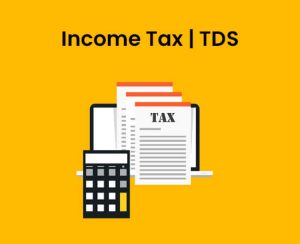
Tax Deducted at Source (Part 2)
In our last blog on TDS we discussed what is TDS, how to deposit TDS and the Due date of deducting. In this blog we will discuss more about TDS filing.
Once TDS is deducted and deposit. The deductor has to file TDS return to the government. For TDS filing deductor often need TAN. So firstly let us understand difference of PAN and TAN.
PAN stands for Permanent Account Number and TAN stands for Tax Deduction Account Number. TAN is to be obtained by the person responsible to deduct tax, i.e., the deductor. In all the documents relating to TDS and all the correspondence with the Income-tax Department relating to TDS one has to quote his TAN.
PAN cannot be used for TAN, hence, the deductor has to obtain TAN, even if he holds PAN.
However, in case of TDS on purchase of land and building, the deductor is not required to obtain TAN and can use PAN for remitting the TDS.
Further in case of TDS on rent and TDS on payment of certain sums by Individuals of HUFs, the deductor can use PAN instead of TAN for remiiting TDS.
Tax is deductible at source at the rates in force. If PAN of the deductee is not intimated to the deductor, tax will be deducted at source by virtue of section 206AA either at the rate in force or at the rate of 20 per cent, whichever is higher. Further, under section 94A(5), if payment or credit is made or given to a deductee who is located in a notified jurisdictional area, tax is deductible at the rate given in the table or at the rate of 30 per cent, whichever is higher.
TDS Filing process
Step – I
Arrange your data in a particular format.
The data structure (file format) in which the e-TDS / e-TCS return is to be prepared in the notified manner.
Step – II
e-TDS/e-TCS return in accordance with the file formats is to be prepared in clean text ASCII format with ‘txt’ as filename extension. e-TDS/e-TCS return can be prepared using Return Preparation Utility provided by Protean (formerly NSDL eGov) or any other third party software
Step – III
Once the file has been prepared as per the file format, it should be verified using the File Validation Utility (FVU).
Step – IV
In case file has any errors the FVU will give a report of the errors. Rectify the errors and verify the file again through the FVU.
Step – V
Generated file can be submitted on the official site of NSDL TIN. Acknowledgement receipt will be generated containing a token number on successful filing. Otherwise a non acceptance memo along with the reasons are issued and return needs to be filed again.
Duties of Deductor
There are the basic duties of the person who is liable to deduct tax at source.
• He shall obtain Tax Deduction Account Number and quote the same in all the documents pertaining to TDS.
• He shall deduct the tax at source at the applicable rate.
• He shall pay the tax deducted by him at source to the credit of the Government (by the due date specified in this regard*).
• He shall file the periodic TDS statements, i.e., TDS return (by the due date specified in this regard*).
• He shall issue the TDS certificate to the payee in respect of tax deducted by him.
How to know the quantum of tax deducted from income by the payer?
To know the quantum of the tax deducted by the payer, you can ask the payer to furnish you a TDS certificate in respect of tax deducted by him. You can also check Form 26AS from your e-filing account.
You can also use the “View Your Tax Credit” facility available at income tax filing site.
There may be times when TDS is not visible in 26AS. Non-reflection of TDS credit in 26AS can be due to several reasons like non-filing of TDS statement by the payer, quoting incorrect PAN of the deductee in the TDS statement filed by the payer. Thus, in case of non-reflection of TDS credit in Form 26AS, the payee has to contact the payer for ascertaining the correct reasons for non-reflection of the TDS credit in Form 26AS.
TDS on Salary
Any person responsible for paying any income chargeable under the head “Salaries” shall, at the time of payment, deduct income-tax on the amount payable at the average rate of income-tax computed on the basis of the rates in force for the financial year in which the payment is made, on the estimated income of the assessee under this head for that financial year.
For the purpose of paying tax, tax shall be determined at the average of income-tax computed on the basis of the rates in force for the financial year, on the income chargeable under the head
Various return for TDS filing
There are various different forms for different TDS transactions. Following are the returns for TDSand their periodicity:
• Form 24Q is filled for TDS on Salary which is filed Quarterly
• Form 26Q – Quarterly statement for tax deducted at source in respect of all payments except ‘salaries
•Form 27Q is filed for TDS on all payments made to non-residents except Salaries. It is also filed Quarterly.
•Form 26QB is filed for TDS on sale of property
•Form 26QC is filed for TDS on rent
Due date of Filing
Quarter Period Covered Due date
1st Quarter April to June 31st July
2nd Quarter July to Sept 31st Oct
3rd Quarter Oct to Dec 31st Jan
4th Quarter Jan to Mar 31st May
Late fee for non filing
The late fee for non filing is 200/- per day after the due date of filing. However, the late fee could not exceed the amount of TDS.